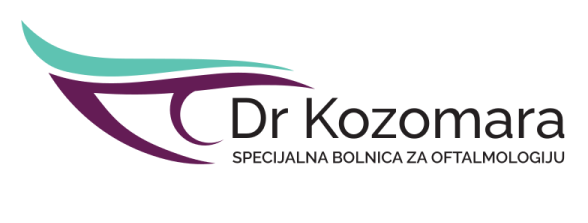BLEPHAROPLASTY (COSMETIC SURGERY OF THE UPPER AND LOWER EYELIDS)
Blepharoplasty, or eyelid “rejuvenation” surgery, is the most frequently performed surgical procedure on the eyelids and one of the most common facial cosmetic surgeries. It is advised as an aesthetic procedure for patients over 45 years of age, as well as for younger individuals who have functional problems due to excess skin on their upper or lower eyelids. In fact, the procedure for cosmetic reasons can be performed before the age of 45, but patients must be prepared that they will probably have to repeat it at least once during their lifetime, as its effect is visible for 10-20 years.
The procedure itself is completely painless, whether it involves surgery on the upper or lower eyelids. It is performed under local anesthesia, with the application of an anesthetic beneath the excess skin. Sometimes, at the patient’s request, anesthesia can be in the form of analgosedation (“you are dazed, but breathing on your own), as well as general anesthesia (you are completely asleep, and a machine is breathing for you).
Upper Eyelid Blepharoplasty
To perform this procedure correctly, the excess skin must be precisely determined and marked. The reason is that the functionality of the eyelid cannot be compromised, i.e., the patient must open and close their eye normally after the surgery. A local anesthetic is injected under the excess skin, and additional anesthesia can be applied as previously mentioned. After removing the excess skin, the wound is closed with sutures that can be self-dissolving and do not need to be removed or those that are not self-dissolving and need to be removed 7-10 days after the procedure. In the postoperative period, which usually lasts about 7-10 days, the patient is advised to put cold compresses (usually ice) on the eyelids several times a day, and to rest more in the first two postoperative days. Follow-ups after surgery are often not necessary.
Lower Eyelid Blepharoplasty
Unlike upper eyelid surgery, lower eyelid surgery can involve removing only the excess skin, excess skin and the fatty tissue (“bags” under the eyes), or just the fatty tissue. In the first two indications, the incision is made on the eyelid skin, while when removing only fatty tissue, the incision is made on the conjunctiva (inner part of the lower eyelid). The first two indications require suturing, while in the third one the wound heals by itself. The operative and postoperative period is the same as in the case of upper eyelid surgery.
Ptosis (Drooping Eyelid)
Ptosis is a medical term that indicates drooping upper eyelids, or eyelids that are not in a normal anatomical position on the eye. If there is a minor degree of ptosis, it is considered only cosmetic, but if the eyelid is so droopy that it covers the pupil and obstructs the vision, it is referred to as functional ptosis. This condition can occur at any age, even at birth, when it is most often referred to as traumatic ptosis that can occur during the delivery. On the other hand, acquired ptosis occurs because of injuries or degenerative changes in the muscles or tendons of the eyelids caused by aging, as well as damage to the oculomotor nerve that lifts the eyelid.
Ptosis Correction
Ptosis can only be corrected surgically, regardless of the patient’s age. Depending on the degree of ptosis and the patient’s age, the technique may include shortening the tendon of the eyelid and lifting the muscle or fixing an elastic silicone strap under the skin to the frontal muscle. Regardless of the technique by which ptosis is corrected, all procedures are performed under local anesthesia, without the need for sedation, except in cases where ptosis is corrected in children when surgery is done under general anesthesia. The recovery is usually 7-10 days, after which the full effect can be seen.
Ectropion and Entropion?
Due to changes in the structure of the eyelid tissue, usually caused by aging, scarring or innervation disorders, change in the eyelid position can occur as well. These can manifest as turning the eyelid outward (ectropion) or inward towards the eye (entropion). The onset of ectropion is often accompanied not only by poor eyelid aesthetics, but also by chronic conjunctival irritation (conjunctivitis), and inflammation of the cornea (keratitis).
In contrast to ectropion, entropion involves the inward turning of the eyelid. Patients often complain of eye irritation and vision deterioration which can be caused by damage to the corneal epithelium (epithelial erosion), or inflammation caused by the eyelashes touching the cornea.
Correction of Eyelid Position Disorders?
Surgical procedure in both cases is simple, quick, and effective. It strengthens the eyelid muscles and returns the eyelid to its normal anatomical position. Regardless of the technique used, all procedures are performed under local anesthesia, and the patient can return to their everyday activities just a few days afterward.

